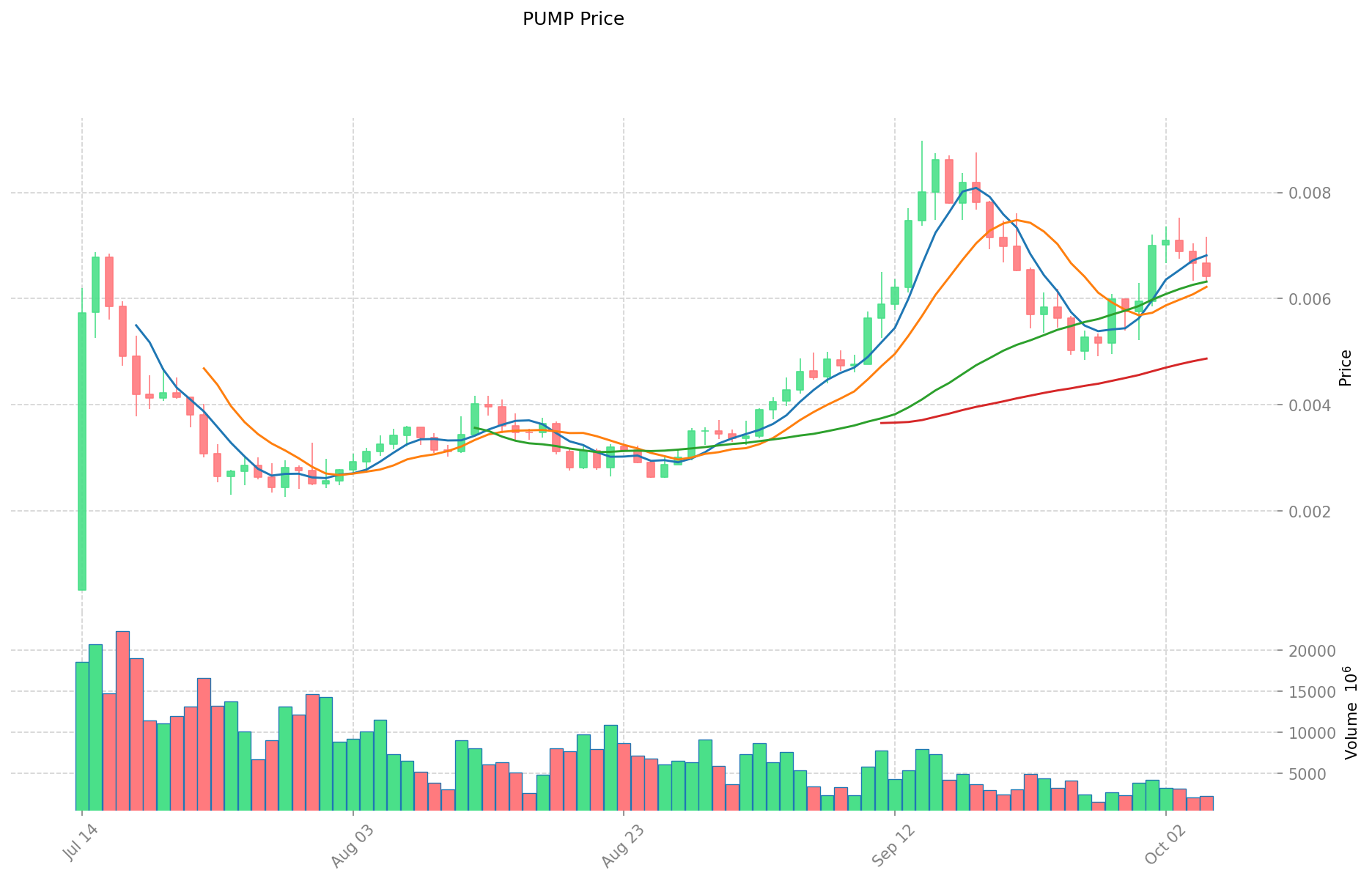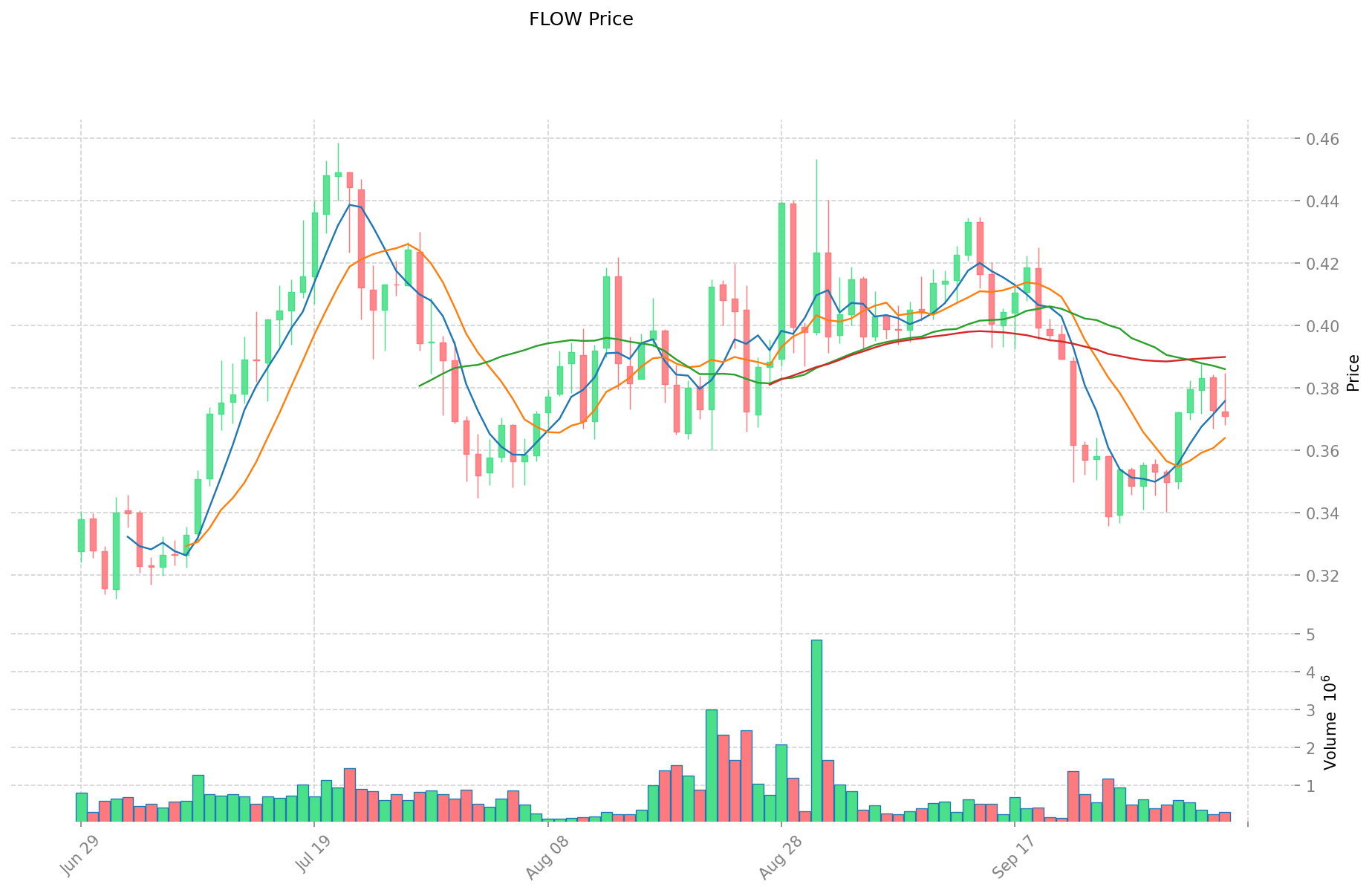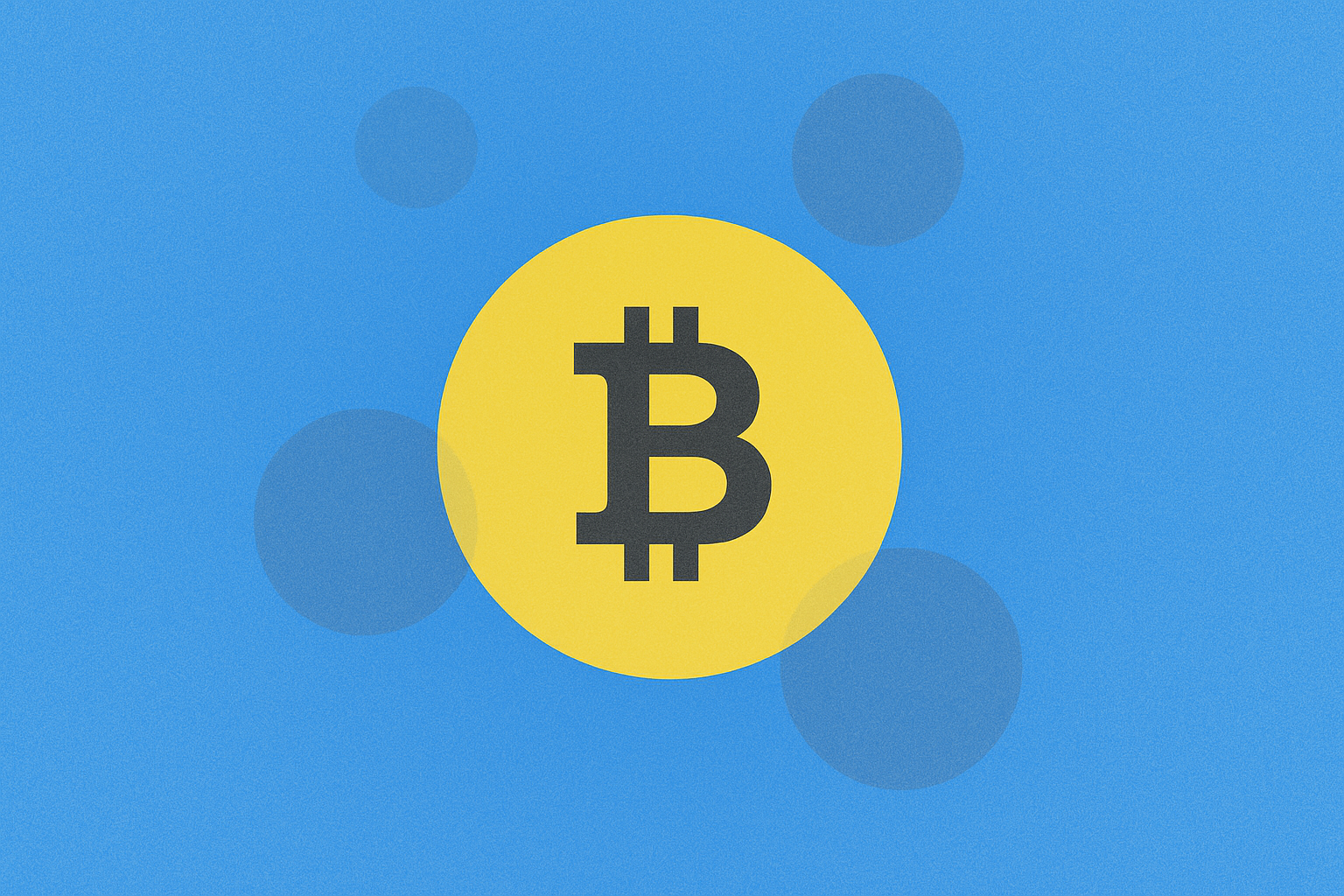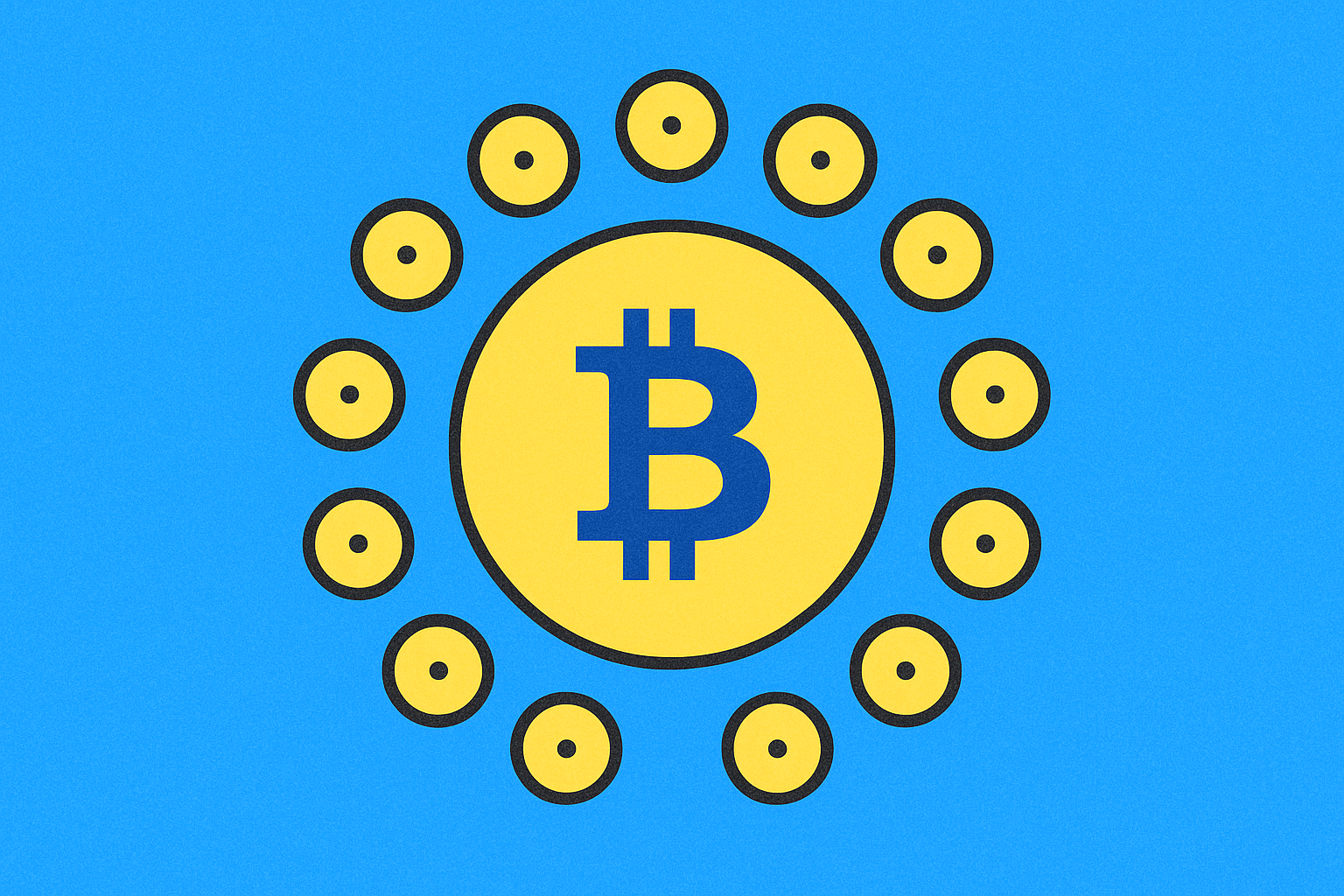PUMPBTC ile FLOW: Dijital Ekonomi Sektöründe İki Kripto Varlığın Kapsamlı Karşılaştırılması

Giriş: PUMP ve FLOW Yatırım Karşılaştırması
Kripto para piyasasında PUMP ile FLOW arasındaki kıyaslama, yatırımcıların gündeminden hiç düşmeyen bir konudur. Bu iki varlık, piyasa değeri sıralaması, kullanım alanları ve fiyat performansı açısından belirgin farklılıklar gösterirken, kripto varlık dünyasında farklı konumlandırmalara işaret etmektedir.
PUMP (PUMP): PUMP.Fun Protokollerinin resmi fayda tokeni olarak lansmanından bu yana piyasanın dikkatini çekmiştir.
FLOW (FLOW): 2020 yılından itibaren yeni nesil oyunlar, uygulamalar ve dijital varlıklar için bir platform olarak öne çıkarak, geliştiriciler ve markalar tarafından yoğun şekilde benimsenen kripto paralardan biri olmuştur.
Bu makalede, PUMP ile FLOW’un yatırım değerleri; geçmiş fiyat eğilimleri, arz mekanizmaları, kurumsal benimsenme, teknik ekosistemler ve gelecek öngörüleri çerçevesinde kapsamlı biçimde karşılaştırılacak; yatırımcıların en çok merak ettiği şu soruya yanıt aranacaktır:
"Şu anda hangisi daha iyi bir alım?" I. Fiyat Geçmişi Karşılaştırması ve Mevcut Piyasa Durumu
PUMP ve FLOW Tarihsel Fiyat Eğilimleri
- 2025: PUMP, 14 Eylül tarihinde $0,008978 ile tüm zamanların en yüksek seviyesine ulaştı.
- 2025: FLOW, 23 Haziran’da $0,292024 ile tüm zamanların en düşük seviyesini gördü.
- Karşılaştırmaya bakıldığında; son piyasa döngüsünde PUMP, $0,0005’ten $0,008978’e yükselirken; FLOW, tarihi zirvesi olan $42,4’ten mevcut seviyelere geriledi.
Mevcut Piyasa Durumu (06 Ekim 2025)
- PUMP güncel fiyatı: $0,006381
- FLOW güncel fiyatı: $0,3702
- 24 saatlik işlem hacmi: $15.383.256 (PUMP) vs $108.123 (FLOW)
- Piyasa Duyarlılık Endeksi (Korku ve Açgözlülük Endeksi): 74 (Açgözlülük)
Anlık fiyatları görmek için tıklayın:
- PUMP güncel fiyatını görüntüle Piyasa Fiyatı
- FLOW güncel fiyatını görüntüle Piyasa Fiyatı


PUMP ve FLOW Yatırım Değerini Belirleyen Temel Faktörler
I. Piyasa Dinamikleri Analizi
Spekülasyon Faktörleri
- PUMP ve FLOW, temel değerlerinden çok piyasa spekülasyonuna bağımlıdır
- PUMP, lansman dönemlerinde aşırı hype nedeniyle yüksek fiyat oynaklığı yaşadı
- Influencer pazarlaması, her iki varlığın fiyat hareketlerinde belirleyici rol oynuyor
Erken Yatırımcı Davranışları
- PUMP’ta erken yatırımcılar, ilk yükselişin ardından kâr realizasyonuna yöneldi
- Balina işlemleri, piyasa duyarlılığı ve fiyat istikrarını ciddi şekilde etkiliyor
- Bireysel yatırımcılar, genellikle kurumsal yatırımcılara satış yaparak ortalama maliyeti yükseltiyor
Kullanım Alanları ve Pratik Uygulamalar
- PUMP, alım-satım ve spekülasyon dışında sınırlı pratik fayda sağladı
- PUMP’ta bağ eğrisi mekanizması, fiyat oynaklığını doğrudan artırıyor
- Her iki token da finansal spekülasyon dışında net bir kullanım alanı geliştirmekte zorlanıyor
II. Sosyal ve Topluluk Faktörleri
KOL (Kanaat Önderi) Etkisi
- Kripto KOL’ler, sosyal medya yoluyla token fiyatlarını ciddi şekilde yönlendiriyor
- Friend.Tech ve Pump.fun gibi platformlara özgü özellikler yeni pazarlama dinamikleri yaratıyor
- Sosyal token mekanizmaları, ek spekülatif katmanlar oluşturabiliyor
Topluluk Katılımı
- Alım-satım faaliyeti, kullanım yerine token sahipleri arasında baskın tartışma konusu olmaya devam ediyor
- Kısa vadeli duyarlılık değişimleri, sert fiyat hareketlerini tetikleyebiliyor
- Bilgi asimetrisi, piyasada manipülasyon riskini artırıyor
III. Finansal Ekosistem Entegrasyonu
Kurumsal Benimsenme
- ETF’ler ve kurumsal yatırım araçları, daha köklü kripto paralara öncelik tanır
- DAT (Dijital Varlık Tokeni) mekanizmaları, yeni likidite yolları sunabilir
- Bireyselden kurumsala sahiplik transferleri, farklı tutma profilleri yaratır
Alım-Satım Platformu Dinamikleri
- Borsalardaki emir akışı mekanizmaları, fiyat oluşumunu etkileyebilir
- Platformlara özgü özellikler, yatırımcı davranışını ve piyasa likiditesini doğrudan şekillendiriyor
- Oyunlaştırma öğeleri, bireysel yatırımcılar arasında aşırı alım-satımı teşvik edebilir
IV. Regülasyon Değerlendirmeleri
Yatırımcı Koruma Endişeleri
- Pazarlama uygulamalarına ilişkin düzenleyici denetim, token tanıtımını etkileyebilir
- PFOF (Emir Akışı Karşılığı Ödeme) tartışmaları, token alım-satımında belirleyici rol oynayabilir
- Olası regülasyon müdahaleleri, piyasa dinamiklerini köklü biçimde değiştirebilir
III. 2025-2030 Fiyat Tahmini: PUMP vs FLOW
Kısa Vadeli Tahmin (2025)
- PUMP: Temkinli $0,00593061 - $0,006377 | İyimser $0,006377 - $0,00790748
- FLOW: Temkinli $0,320866 - $0,3731 | İyimser $0,3731 - $0,555919
Orta Vadeli Tahmin (2027)
- PUMP, büyüme aşamasına geçebilir ve tahmini fiyat aralığı $0,0048120842 - $0,01119903232 olarak öngörülüyor
- FLOW, konsolidasyon sürecine girebilir ve fiyatları $0,387517050375 - $0,62221047525 aralığında tahmin ediliyor
- Başlıca itici güçler: Kurumsal sermaye girişi, ETF’ler, ekosistem gelişimi
Uzun Vadeli Tahmin (2030)
- PUMP: Temel senaryo $0,008265797698369 - $0,012337011490104 | İyimser senaryo $0,012337011490104 - $0,014064193098718
- FLOW: Temel senaryo $0,675506404726335 - $0,7947134173251 | İyimser senaryo $0,7947134173251 - $0,87418475905761
Yasal Uyarı: Bu içerik yalnızca bilgilendirme amaçlıdır, yatırım tavsiyesi olarak değerlendirilmemelidir. Kripto para piyasaları yüksek derecede volatil ve öngörülemezdir. Her yatırım kararınız öncesinde mutlaka kendi araştırmanızı yapınız.
PUMP:
| Yıl | Tahmini En Yüksek Fiyat | Tahmini Ortalama Fiyat | Tahmini En Düşük Fiyat | Değişim Oranı |
|---|---|---|---|---|
| 2025 | 0.00790748 | 0.006377 | 0.00593061 | 0 |
| 2026 | 0.010356248 | 0.00714224 | 0.0041424992 | 11 |
| 2027 | 0.01119903232 | 0.008749244 | 0.0048120842 | 37 |
| 2028 | 0.0116697416472 | 0.00997413816 | 0.0070816380936 | 56 |
| 2029 | 0.013852083076608 | 0.0108219399036 | 0.010064404110348 | 69 |
| 2030 | 0.014064193098718 | 0.012337011490104 | 0.008265797698369 | 93 |
FLOW:
| Yıl | Tahmini En Yüksek Fiyat | Tahmini Ortalama Fiyat | Tahmini En Düşük Fiyat | Değişim Oranı |
|---|---|---|---|---|
| 2025 | 0.555919 | 0.3731 | 0.320866 | 0 |
| 2026 | 0.627087825 | 0.4645095 | 0.255480225 | 25 |
| 2027 | 0.62221047525 | 0.5457986625 | 0.387517050375 | 47 |
| 2028 | 0.83512653349125 | 0.584004568875 | 0.35624278701375 | 57 |
| 2029 | 0.879861283467075 | 0.709565551183125 | 0.404452364174381 | 91 |
| 2030 | 0.87418475905761 | 0.7947134173251 | 0.675506404726335 | 114 |
IV. Yatırım Stratejisi Karşılaştırması: PUMP ve FLOW
Uzun Vadeli ve Kısa Vadeli Yatırım Stratejileri
- PUMP: Spekülatif alım-satım ve kısa vadeli kazanç odaklı yatırımcılar için uygundur
- FLOW: Ekosistem gelişimi ve potansiyel uzun vadeli büyüme arayanlar için idealdir
Risk Yönetimi ve Portföy Dağılımı
- Temkinli yatırımcılar: PUMP %5, FLOW %15
- Agresif yatırımcılar: PUMP %20, FLOW %30
- Korumalı araçlar: Stablecoin tahsisi, opsiyonlar, döviz sepeti portföyleri
V. Potansiyel Risk Karşılaştırması
Piyasa Riski
- PUMP: Spekülatif yapı ve bağ eğrisi mekanizması nedeniyle yüksek volatilite
- FLOW: Genel kripto piyasası trendlerine ve rakip gelişmelere karşı kırılganlık
Teknik Risk
- PUMP: Platform istikrarı, akıllı kontrat açıkları
- FLOW: Ölçeklenebilirlik kısıtları, olası ağ tıkanıklıkları
Regülasyon Riski
- Küresel regülasyon politikaları, iki token’ı farklı biçimde etkileyebilir; PUMP, spekülatif doğası nedeniyle daha yoğun denetim riski taşır
VI. Sonuç: Hangisi Daha İyi Bir Alım?
📌 Yatırım Değeri Özeti:
- PUMP avantajları: Yüksek kısa vadeli kâr potansiyeli, aktif alım-satım topluluğu
- FLOW avantajları: Yerleşik ekosistem, uzun vadeli büyüme potansiyeli, kurumsal ilgi
✅ Yatırım Tavsiyesi:
- Yeni yatırımcılar: Kripto piyasasına maruz kalmak için portföyde küçük bir FLOW payı ayırmayı düşünebilirsiniz
- Deneyimli yatırımcılar: Hem PUMP hem FLOW’u dengeli şekilde portföye ekleyebilirsiniz, risk toleransınıza göre oranı ayarlayabilirsiniz
- Kurumsal yatırımcılar: Daha köklü ekosistem ve uzun vadeli büyüme potansiyeli nedeniyle FLOW’u tercih edebilirsiniz
⚠️ Risk Uyarısı: Kripto para piyasası yüksek oynaklığa sahiptir. Bu makale yatırım tavsiyesi içermez. None
VII. Sıkça Sorulan Sorular
S1: PUMP ile FLOW arasındaki ana farklar nelerdir? C: PUMP, yüksek oynaklığıyla öne çıkan spekülatif bir varlıkken; FLOW, ekosistem geliştirmeye odaklanan ve daha köklü bir projedir. PUMP, bağ eğrisi mekanizması nedeniyle doğal fiyat dalgalanması yaşarken; FLOW, oyun ve dijital varlıklar gibi çeşitlendirilmiş uygulamalara sahiptir.
S2: Son dönemde hangi token daha iyi fiyat performansı gösterdi? C: PUMP, 2025’te $0,0005’ten tüm zamanların en yüksek seviyesi olan $0,008978’e çıkarak daha iyi fiyat performansı sergiledi. Buna karşın FLOW, tarihi zirvesi olan $42,4’ten mevcut $0,3702 seviyelerine geriledi.
S3: PUMP ve FLOW’un işlem hacimleri nasıl karşılaştırılıyor? C: En güncel verilere göre, PUMP’ın 24 saatlik işlem hacmi $15.383.256 ile FLOW’un $108.123’üne kıyasla çok daha yüksek. Bu durum, PUMP’ın şimdilik daha aktif alım-satım ve likiditeye sahip olduğunu gösteriyor.
S4: 2030 yılı için PUMP ve FLOW fiyat tahminleri nedir? C: PUMP için temel senaryo $0,008265797698369 ile $0,012337011490104 arasında, iyimser senaryo ise $0,014064193098718’e kadar çıkabilir. FLOW için temel senaryo $0,675506404726335 ile $0,7947134173251 arasında, iyimser senaryo ise $0,87418475905761’e kadar ulaşabilir.
S5: Yatırımcılar portföy dağılımını PUMP ve FLOW arasında nasıl yapmalı? C: Temkinli yatırımcılar portföyün %5’ini PUMP, %15’ini FLOW’a ayırabilirken; agresif yatırımcılar %20 PUMP, %30 FLOW tercih edebilir. Dağılım, bireysel risk toleransı ve yatırım hedeflerine göre belirlenmeli.
S6: PUMP ve FLOW’a yatırım yaparken karşılaşılan başlıca riskler nelerdir? C: PUMP için yüksek oynaklık, platform istikrarı sorunları ve düzenleyici denetim öne çıkarken; FLOW için genel kripto piyasası trendlerine duyarlılık, ölçeklenebilirlik sorunları ve rakip blockchain platformlarıyla rekabet riski bulunuyor.
S7: Uzun vadeli yatırım için hangi token daha uygun? C: Yerleşik ekosistemi, uzun vadeli büyüme potansiyeli ve kurumsal ilgi nedeniyle FLOW, çoğunlukla uzun vadeli yatırım için daha uygun görülür. Yatırımcılar kendi araştırmasını yapmalı ve kişisel hedeflerine öncelik vermelidir.

CryptoJack neden bu boğa koşusunda Gate.com ve GT TOKEN hakkında bu kadar umutlu?

Niza Global (NIZA) iyi bir yatırım mı?: Bu yükselen kripto para biriminin olası riskleri ve getirileri üzerine kapsamlı bir analiz

MFER vs CHZ: Dijital Sanat Dünyasında NFT Ekosistemlerinin Rekabeti

ASTER, XPL ve Virtuals artık Robinhood US'da listelenmiştir.

BBT ve XLM: Doğal Dil İşleme Alanında Önde Gelen Tokenizer'ların Performans Metriklerinin Karşılaştırılması

Vine (VINE) iyi bir yatırım olarak değerlendirilebilir mi?: Bu yeni nesil kripto paranın taşıdığı potansiyel ve risklerin incelenmesi

NFT Nadirliği Anlamak: Puanlama Sistemleri Rehberi

Blokzincirde Proof-of-Work Konsensüs Mekanizmasını Anlamak

Satoshi'den Bitcoin'e Dönüşümün Anlaşılması: Kolay Anlatım

Web3'te Hashing Kavramı: Kapsamlı Bir Blockchain Rehberi

Ethereum Gas Ücretlerini Anlamak: Tam Kapsamlı Rehber





